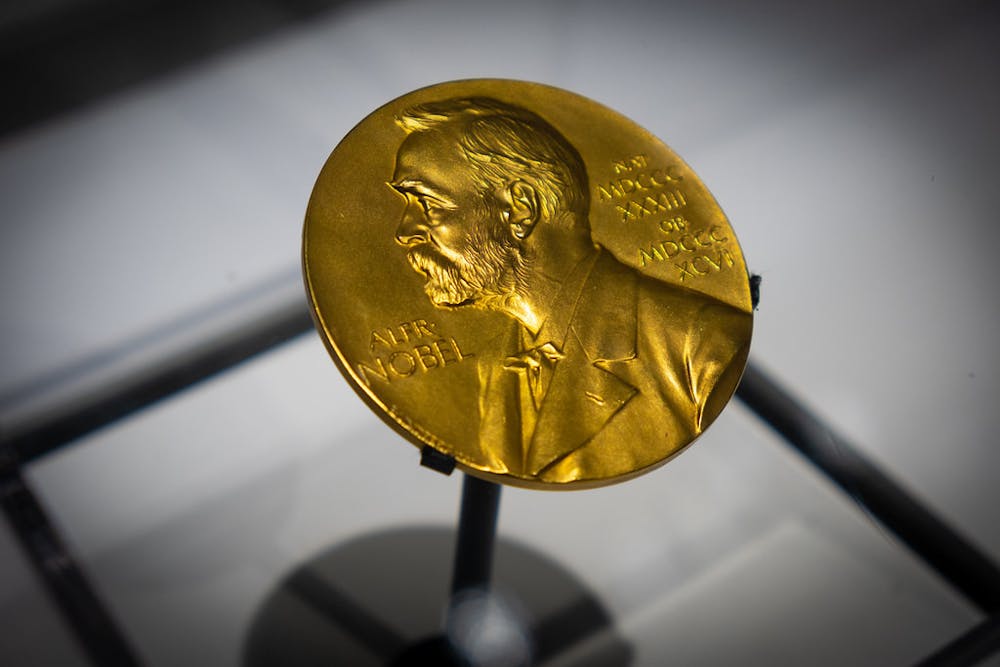As fall break looms ahead, let’s take a look at the recent scientific news. In the past week, laureates of the 2024 Nobel Prizes in Chemistry, Physics and Physiology or Medicine have been announced.
Chemistry Laureates: David Baker and Demis Hassabis and John M. Jumper
Half of this year’s Nobel Prize in Chemistry was awarded to David Baker, associated with the University of Washington and the Howard Hughes Medical Institute for “computational protein design.” The other half was received by Demis Hassabis and John M. Jumper — both affiliated with Google DeepMind for “protein structure prediction.”
Baker’s work examines protein structures through computational techniques. He is one of the creators of the Rosetta algorithm, which is used for predicting protein structures, designing a diverse array of proteins with novel functions and other purposes that hold potential for biochemistry, medicine and pharmacology.
Hassabis and Jumper are the co-founder and CEO, and Director of Google Deepmind, respectively. They are the developers of AlphaFold, a program that utilizes artificial intelligence (AI) to predict the most stable 3D configuration of a protein from a given amino acid sequence. Jumper stated that their work on AlphaFold is a “key demonstration that AI will make science faster and ultimately help to understand disease and develop therapeutics.”
Physics Laureates: John J. Hopfield and Geoffrey E. Hinton
John J. Hopfield and Geoffrey E. Hinton, affiliated with Princeton University and the University of Toronto, respectively, have been awarded the Nobel Prize “for foundational discoveries and inventions that enable machine learning with artificial neural networks.”
Hopfield is the creator of the Hopfield network: a neural network that retrieves and stores patterns in a manner modeling human memory. The Hopfield network was one of the first artificial neural networks and the concepts surrounding it have contributed to the basis for modern AI.
Hinton has used the Hopfield network for the development of the Boltzmann machine: a type of network that can be trained on specific patterns and then recreate or recognize specific characteristics.
In an interview with The New York Times, Hinton considered the utility of the Boltzmann machine, even if it may not be a permanent solution.
“Boltzmann machines were like an enzyme. It got us over the barrier of ‘How do you train deep neural networks?’ It made it easier to train them. And once we had learned how to do that, we didn’t need the Boltzmann machine anymore,“ he stated.
Physiology or Medicine: Victor Ambros and Gary Ruvkun
Victor Ambros — a professor at the University of Massachusetts Chan Medical School — along with Gary Ruvkun, affiliated with Harvard Medical School and Massachusetts General Hospital, have won this year’s Nobel Prize in Physiology or Medicine “for the discovery of microRNA and its role in post-transcriptional gene regulation.”
MicroRNAs are a type of small non-coding RNAs, which are sequences that are shorter than 200 nucleotides. Ambros and Ruvkun’s discovery took place while they were studying Caenorhabditis elegans, a species of worm that is a popular model organism for learning more about fundamental biological processes. The importance of microRNAs was further validated when Ruvkun published a study that showed microRNAs were present in many species.
Due to the unique characteristics of microRNAs, they serve as crucial regulators of gene activity, and can influence whether or not an individual suffers from cancer, hereditary diseases such as cystic fibrosis, and other afflictions. Ambros and Ruvkun’s discovery essentially uncovered an important aspect of gene regulation that have critical implications for the field of medicine.
Editor’s Note, 2024: This article has been edited to reflect the correct name of the University of Massachusetts Chan Medical School. The News-Letter regrets this error.





